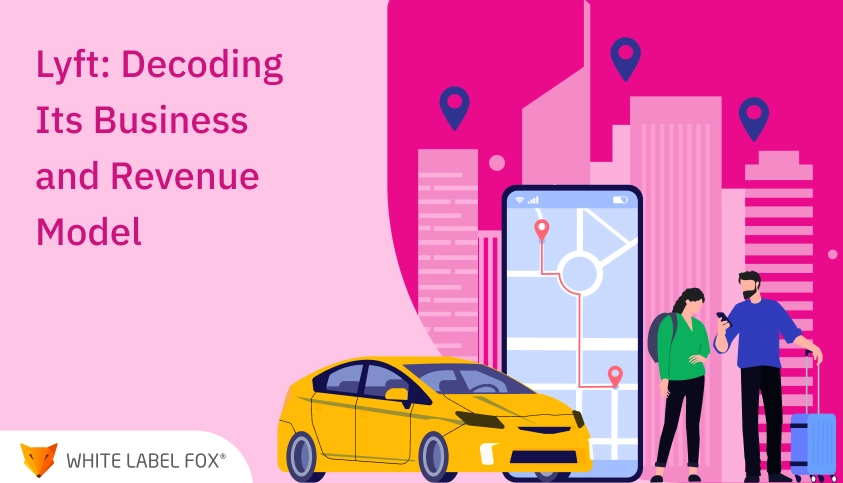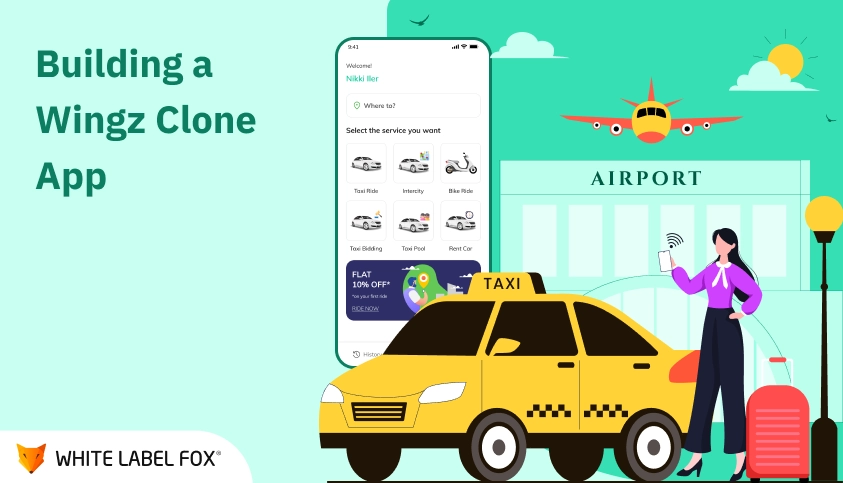Living in the connected era, the online ride-booking market is continually surging in popularity. Many taxi booking apps exist, but Lyft has emerged as a frontrunner player in the US market, offering premium transportation services through its innovative and user-friendly platform. This blog will explore how Lyft works, examining its business model and revenue-generating strategies.
By exploring Lyft’s strategic approach more deeply, we can gain insight into the dynamics of the modern ride-hailing industry and how digital technologies are reshaping people’s commute.
Are You Planning To Develop A Taxi Booking App Like Lyft?
Learn More About Our Readymade Clone Script.
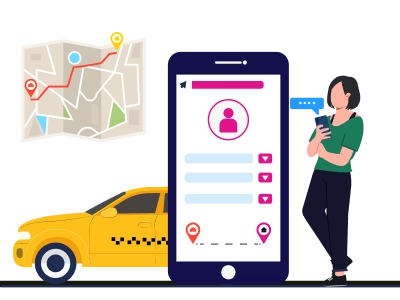
Through user-friendly mobile apps, a network of drivers, and efficient logistics, Lyft connects passengers with reliable rides, offering a seamless experience from booking to reaching their destination. We will also uncover the various revenue streams contributing to Lyft’s financial success, including ride fares, driver commissions, partnerships, and other monetization strategies.
Keep reading the blog as we reveal the workings of Lyft’s business and revenue model, shedding light on its impact on the broader transportation landscape.
What is Lyft?
Lyft is a ride-hailing, bicycle-sharing system, car rental, and food delivery platform in the United States and selected cities in Canada. The ride-sharing platform sets fares and operates on a dynamic pricing model to make money. Lyft is the second largest taxi booking service in the US after Uber.
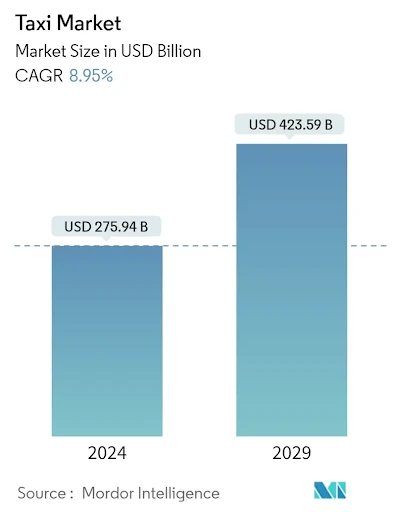
Ride-sharing services provide various benefits, such as easy booking options, no parking trouble, and low carbon footprints. Due to the increasing need for ride-hailing services, the global on-demand ride-sharing service market is expected to grow at 13.2% CAGR between 2021 and 2030. The market is estimated to reach around $205.83 billion by 2030.
Success Story of Lyft to Look into!
- Industry: Vehicles for hire
- Founded Year: June 2012 (as Zimride)
- Founders: Logan Green and John Zimmer
- Headquarters: San Francisco, California, U.S.
- Area served: Canada and the United States
- Revenue: $4.09 billion
- Number of employees: 4,453
- Riders: 20.3 million active riders
- Lyft driver average salary: $37,803
- Website: www.lyft.com
In 2020, Lyft launched multi-city U.S. robotaxi services with Motional. In 2022, Lyft announced an agreement to acquire PBSC Urban Solutions. In Nov 2022, the ride-sharing company announced a layoff of around 700 employees. A driver who worked with Lyft was most satisfied; more than 33% of respondents agreed they were satisfied working with the company.
How Does Lyft Work?
Lyft is an on-demand ride-hailing app where riders can book a cab whenever they want. Lyft has also launched another service called “Lyft Line,” where passengers travelling in the same direction can share the ride and divide the cost.
Here’s how it works:
- Commuters request a Lyft Line ride within the Lyft app.
- The app matches them with other passengers going in the same direction.
- The driver accepts the ride request, picks up riders and drops them off at their locations.
Related to payment, Lyft pays its drivers after each ride. The fare is automatically calculated and split among passengers. Moreover, passengers and drivers can track each activity in real-time and leave reviews once the ride ends.
Lyft Business Model: Check How the Taxi-booking Company Works?
Today, most customers are searching for ways to get around. They are likely to choose a convenient option and expect an enjoyable, more straightforward taxi booking experience. Most people, including you and me, are moving towards the TaaS (Transportation as a service) model.
Many taxi-sharing services cater to the increasing transportation needs of riders worldwide, and Lyft is one of the top ones. Lyft, a ride-hailing company, started offering shorter rides in cities with drivers and passengers connecting. The ride-sharing company tried to foster a more non-commercial and friendly approach to the service. The transportation platform experienced notable growth, and Lyft experienced around 31% yearly growth.
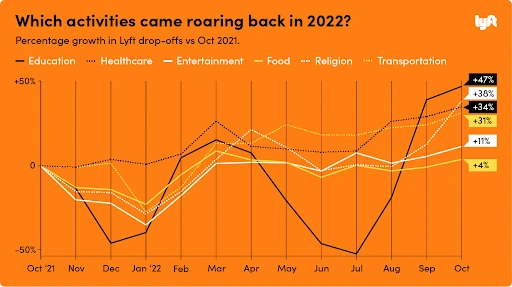
One of the significant parts of the company’s profit from the post-COVID pandemic comes from work and vacation travel. Airport transportation services are up by 34% and lodging by 24%. The company has expanded in the United States from 60 cities to 300.
The report from the Second measure shows that Lyft sales increased by 29% year over year in 2022. Moreover, the company’s average sales per customer in 2022 was around $77; this shows 18% growth from the previous year and a 54% increase from two years ago.
Value Propositions
Let’s break down how Lyft’s business model benefits both riders and drivers:
Benefits for Riders
- Lyft offers a user-friendly mobile app that allows riders to book a ride anytime, anywhere.
- Lyft provides competitive ride pricing, offering a cost-effective alternative to traditional taxis or owning a car.
- With Lyft, riders can choose the type of vehicle and ride experience that suits their preferences and budget.
- Lyft prioritizes safety by conducting background checks on drivers, implementing safety features in the app, and providing real-time tracking and support.
Benefits for Drivers
- Lyft’s business model allows drivers to work on a flexible schedule and choose when and where they want to drive.
- Lyft allows drivers to earn income based on the number of rides they complete.
- Lyft offers support and resources to help drivers succeed, including access to driver training, assistance with vehicle maintenance, and 24/7 customer support.
- Lyft fosters a sense of community among drivers through initiatives such as driver meetups, feedback forums, and recognition programs.
Lyft’s business model benefits riders by providing convenient, affordable, and safe transportation options while offering drivers flexible earning opportunities, support, and a sense of community within the platform.
Lyft Revenue Model: How Does Lyft Make Money?
The ride-sharing platform is giving tough competition to other taxi-hailing business owners. Lyft is trying to improve its service to stand out in the market. A cab aggregator enables riders to hire taxis with a few clicks on their smartphone. The impressive Lyft business model and its revenue strategy help the company to make great money.
Every transaction on the taxi-hailing platform is divided between the company and the drivers. Lyft keeps around 20% of the cut from the total amount riders pay, and the rest goes to drivers’ pockets. There are many other ways to answer the question of how Lyft makes money. Let’s look into them.
Taxi Ride Charges
Lyft charges around 20% for each transaction through the platform. The five-seater vehicle falls under the normal category. Drivers receive almost 80% of the cost that passengers pay.
Surge Pricing
Just as Uber charges surge prices from passengers, Lyft also charges extra costs. The ride-hailing heat maps help to define areas with great demand. The high price is charged for areas with high demand. The heat maps are time—and location-specific.
Lyft Plus
Cabs with more than six seats and costing more than standard services are included in Lyft Plus. To provide riders with other options for five-seaters, Lyft has launched Plus. The charges for Lyft Plus are pretty high, helping the company make a good profit.
Lyft Premier
To cater to the requirements for luxury rides, the transportation company has launched Lyft Premier, which enables riders to book cars, including Mercedes, Audi, etc. It is considered one of the costlier alternatives.
Lyft Line
Riders will be paired with line drivers who travel in the same way. To promote car share and provide options to those who don’t wish to hire independent taxis, the ride-hailing company launched “Lyft Line”. As the name suggests, it allows users to share a cab with others on a pre-specified route. It’s a suitable alternative to public transport.
MultiModal Strategy
In the beginning, Lyft has fewer options to provide users with customization. The transportation company offers more comprehensive services to riders on their demand; this acts as an additional source of revenue.
The taxi company is growing its service, and Lyft has become a one-stop multimode app that provides different services in US cities. Besides, the company offers bike renting, scooter sharing, etc. Multimodel Lyft framework includes:
- Public Transit
- Bikes and Scooters
- Autonomous Vehicles
- Ridesharing Marketplace
There are lots of ways that Lyft can make money. Millions of rides occur on the platform, helping the company make many profits.
How Much Does It Cost to Build an App Like Lyft?
Lyft is widespread across the USA and makes headlines in the online ride-booking market. Lyft’s business model has inspired many entrepreneurs to consider building an Lyft clone app because it can be a more practical and cost-effective approach compared to custom development.
Moreover, it allows entrepreneurs to hit the market earlier without spending too much on development and other technological setup. Below are certain factors that influence the cost of building an app like Lyft:
- Development approach
- Features and Functionality
- Design and interface
- Technology stack
- Platform compatibility
- Development team’s location
By considering these factors and making informed decisions, entrepreneurs can estimate the cost of building a Lyft clone app and choose the most cost-effective approach that matches their budget and business goals. If you are one of those entrepreneurs who want to enter the online ride-booking market, contact us. We will help you grow your conventional transportation business with intelligent digital solutions.
Frequently Ask Questions
Lyft is a ride-sharing service that connects passengers with drivers via
a mobile app. It operates in cities across the U.S. and Canada, offering
a range of transportation options, including standard rides, shared
rides, luxury rides, and even bike or scooter rentals in certain
locations.
Lyft works by matching passengers with nearby drivers through its mobile
app. Users can request a ride, track the driver's location in real-time,
and pay for the ride seamlessly through the app. Lyft offers different
ride options, such as Lyft, Lyft XL, Lux, Lux Black, and Lux Black XL,
depending on the rider’s preferences and the size of the group.
Some key features of Lyft include:
- Ride Scheduling: Allows users to schedule rides in
advance.
- Driver Ratings: Both drivers and passengers can rate each
other for mutual accountability.
- Real-time Tracking: Passengers can track the driver’s
location on the map.
- Split Fare: The option to share the ride cost with
friends.
- Multiple Ride Options: A variety of options for different
preferences, including luxury and larger rides.
- 24/7 Customer Support: Available through the app for any
issues or inquiries.
- Ride Scheduling: Allows users to schedule rides in advance.
- Driver Ratings: Both drivers and passengers can rate each other for mutual accountability.
- Real-time Tracking: Passengers can track the driver’s location on the map.
- Split Fare: The option to share the ride cost with friends.
- Multiple Ride Options: A variety of options for different preferences, including luxury and larger rides.
- 24/7 Customer Support: Available through the app for any issues or inquiries.
Lyft's revenue comes from several streams:
- Ride Fares: The primary revenue comes from the rides
booked through the app. Lyft takes a commission from the fare
paid by passengers (usually around 20% to 25%).
- Lyft Lux and Lux Black: Premium services that come with
higher fares.
- Subscription Services: Lyft offers Lyft Pink, a
membership program that provides users with benefits like
discounts on rides, priority support, and waived fees.
- Rental Services: Lyft has partnered with car rental
services for its rental fleet.
- Bike and Scooter Rentals: Lyft also generates revenue
from its bike and scooter-sharing programs, available in certain
cities.
- Ride Fares: The primary revenue comes from the rides booked through the app. Lyft takes a commission from the fare paid by passengers (usually around 20% to 25%).
- Lyft Lux and Lux Black: Premium services that come with higher fares.
- Subscription Services: Lyft offers Lyft Pink, a membership program that provides users with benefits like discounts on rides, priority support, and waived fees.
- Rental Services: Lyft has partnered with car rental services for its rental fleet.
- Bike and Scooter Rentals: Lyft also generates revenue from its bike and scooter-sharing programs, available in certain cities.
Lyft uses a dynamic pricing model, where the fare is based on:
- Base Fare: A fixed amount for the ride.
- Time and Distance: The duration and distance of the ride
affect the total cost.
- Surge Pricing: During high demand, such as rush hours or
during bad weather, Lyft may implement surge pricing to
encourage more drivers to become available.
- Base Fare: A fixed amount for the ride.
- Time and Distance: The duration and distance of the ride affect the total cost.
- Surge Pricing: During high demand, such as rush hours or during bad weather, Lyft may implement surge pricing to encourage more drivers to become available.
Lyft drivers earn money based on the distance and time of each ride. In
addition to the fare, drivers can receive tips from passengers. Lyft
offers various incentives and bonuses to drivers, such as completing a
certain number of rides in a given time frame. The exact compensation
can vary based on location, demand, and the type of ride requested.
Lyft provides various ride options for different customer needs:
- Lyft: The standard ride option for 1 to 4 passengers.
- Lyft XL: For larger groups, accommodates up to 6
passengers.
- Lux: High-end, luxury cars for premium experiences.
- Lux Black and Lux Black XL: Premium black car options
with professional drivers, available in select cities.
- Lyft: The standard ride option for 1 to 4 passengers.
- Lyft XL: For larger groups, accommodates up to 6 passengers.
- Lux: High-end, luxury cars for premium experiences.
- Lux Black and Lux Black XL: Premium black car options with professional drivers, available in select cities.
Lyft has implemented several safety measures to protect both passengers
and drivers:
- Background Checks: All drivers undergo background checks
before they are approved to drive.
- Insurance Coverage: Lyft offers insurance coverage for
both drivers and passengers.
- Ride Tracking: Each ride is tracked, and real-time
location is shared with friends or family.
- Emergency Assistance Button: Passengers and drivers can
contact emergency services directly from the app if needed.
- COVID-19 Safety Protocols: Lyft has instituted health and
safety guidelines, including requiring masks and cleaning of
vehicles.
- Background Checks: All drivers undergo background checks before they are approved to drive.
- Insurance Coverage: Lyft offers insurance coverage for both drivers and passengers.
- Ride Tracking: Each ride is tracked, and real-time location is shared with friends or family.
- Emergency Assistance Button: Passengers and drivers can contact emergency services directly from the app if needed.
- COVID-19 Safety Protocols: Lyft has instituted health and safety guidelines, including requiring masks and cleaning of vehicles.
Lyft's main competitor is Uber, the global leader in the ride-sharing
market. Other competitors include local services like Bolt, Juno, and
Ola, which operate in certain regions. Lyft differentiates itself
through its customer-centric approach, safety protocols, and pricing
strategies.
Lyft has opportunities to expand in several ways:
- Geographic Expansion: Expanding to new cities or
countries where ride-sharing services are still growing.
- Diversification of Services: Further developing its bike
and scooter-sharing programs, autonomous vehicle technology, and
expanding into other delivery services.
- Sustainability Initiatives: As customers increasingly
prioritize sustainability, Lyft’s focus on electric vehicles and
eco-friendly initiatives can help attract more users.
- Partnerships with Businesses: Lyft can expand its reach
by forming partnerships with large corporations, offering
employees transportation benefits or special deals.
- Geographic Expansion: Expanding to new cities or countries where ride-sharing services are still growing.
- Diversification of Services: Further developing its bike and scooter-sharing programs, autonomous vehicle technology, and expanding into other delivery services.
- Sustainability Initiatives: As customers increasingly prioritize sustainability, Lyft’s focus on electric vehicles and eco-friendly initiatives can help attract more users.
- Partnerships with Businesses: Lyft can expand its reach by forming partnerships with large corporations, offering employees transportation benefits or special deals.

